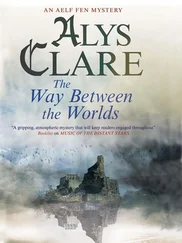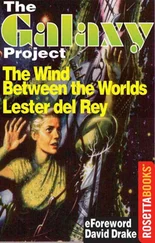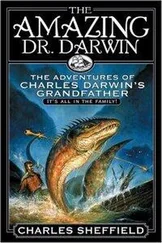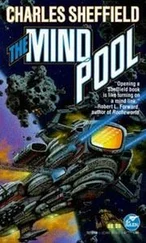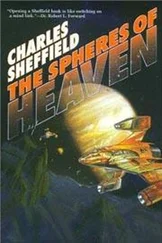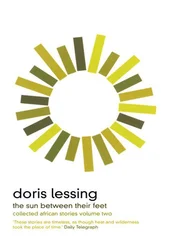It is clear that we must make the beanstalk of the strongest, lightest material that we can find. What is not obvious is whether any material will allow us to build a beanstalk with a reasonable taper factor. Before we can address that question, we need to know how strong the cable has to be.
The cable must be able to support the downward weight of 35,770 kilometers of itself, since that length hangs down below geostationary height. However, that weight is less than the weight of a similar length of cable down here on Earth, for two reasons. First, the downward gravitational force decreases as the square of the distance from the center of the Earth; and second, the upward centrifugal force increases linearly with that distance. Both these effects tend to decrease the tension that the cable must support. A straightforward calculation shows that the tension in a cable of constant cross-section will be equal to the weight of 4,940 kilometers of such a cable, here on Earth. This is in a sense a “worst case” calculation, since we know that the cable will not be of constant cross-section; rather, it will be designed to taper. However, the figure of 4,940 kilometers gives us a useful standard, in terms of which we can calibrate the strength of available materials. Also, we want to hang a transportation system onto the central load-bearing cable, so we need an added margin of strength for that.
Now let us compare our needs with what is available. Let us define the “support length” of a material as the length of itself that a cable of such a material will support, under one Earth gravity, before it breaks under its own weight.
The required support length is 4,940 kms. What are the support lengths of available materials?
TABLE 1 lists the support lengths for a number of different substances. It offers one good reason why
TABLE 1
Strength of materials
Material Density (gm/cc) | Tensile Strength (kgm/cm 2) | Support Length (km)
Lead 11.4 | 200 | 0.18
Gold 19.3 | 1,400 | 0.73
Cast iron 7.8 | 3,500 | 4.5
Manganese steel 7.8 | 16,000 | 21.
Drawn steel wire 7.8 | 42,000 | 54.
KEVLAR TM1.4 | 28,000 | 200.
Silicon whisker 3.2 | 210,000 | 660.
Graphite whisker 2.0 | 210,000 | 1,050.
no one has yet built a beanstalk. The strongest steel wire is a hundred times too weak. The best candidate materials that we have today, silicon and graphite dislocation-free whiskers, fall short by a factor of five.
This is no cause for despair. The strength of available materials has increased throughout history, and we can almost certainly look for strength increases in the future. A new class of carbon compounds, the fullerenes, are highly stable and seem to offer the potential of enormous tensile strength.
We would like to know how much strength is reasonable, or even possible. We can set bounds on this by noting that the strength of any material ultimately depends on the bonding between the outer electrons of its atoms. The inner electrons, and the nucleus, where almost all the mass of the atom resides, contribute nothing. In particular, neutrons in the nucleus add mass, and they do nothing for bonding strength. We should therefore expect that materials with the best strength-to-density ratios will be made of the lightest elements.
TABLE 2
Potential strength of materials
Element pairs* | Molecular weight (kcal/mole) | Bond strength (kms) | Support length
Silicon-carbon 40 | 104 | 455
Carbon-carbon 24 | 145 | 1,050
Fluorine-hydrogen 20 | 136 | 1,190
Boron-hydrogen 11 | 81 | 1,278
Carbon-oxygen 28 | 257 | 1,610
Hydrogen-hydrogen 2 | 104 | 9,118
Muonium 2.22 | 21,528 | 1,700,000
Positronium 1/919 | 104 | 16,750,000
*Not all element pairs exist as stable molecules.
TABLE 2 makes it clear that this argument is correct. The strongest material by far would use a hydrogen-hydrogen bond. In such a case, each electron (there is only one in each hydrogen atom) contributes to the bond, and there are no neutrons to add wasted mass.
A solid hydrogen cable would do us quite nicely in beanstalk construction, with a support length about twice what we need. However, solid crystalline hydrogen is not available as a working material. Metallic hydrogen has been made, as a dense, crystalline solid at room temperature — but at half a million atmospheres of pressure.
It is tempting to introduce a little science fiction here, and speculate on a few materials that do not yet exist in stable, useful form. The last two items in TABLE 2 both fall into the category of Fictionite (also known as Unobtainium), materials we would love to have available but do not.
A muonium cable would be made of hydrogen in which the electrons in each atom have been replaced by muons. The muon is like an electron, but 207 times as massive, and the resulting atom will be 207 times as small, with correspondingly higher bonding strength. Unfortunately the muonium cable is not without its problems, quite apart from the difficulty of making it in solid form. The muon has a lifetime of only a millionth of a second; and because muons spend a good part of the time close to the proton of the muonium atom, there is a good probability of spontaneous proton-proton fusion.
Time to give up? Not necessarily. It is worth remembering that a free neutron, not forming part of an atom, decays to a proton and an electron with an average lifetime of twelve minutes. Within an atom, however, the neutron is stable for an indefinite period. We look to future science to provide means of stabilizing the muon, perhaps by binding it, as the neutron is bound, within some other structure or material.
Positronium takes the logical final step in getting rid of the wasted mass of the atomic nucleus completely. It replaces the proton of the hydrogen atom with a positron. Positronium has been made in the lab, but it too is highly unstable. It comes in two varieties, depending on spin alignments. Para-positronium decays in a tenth of a nanosecond. Ortho-positronium lasts a thousand times as long — a full tenth of a microsecond.
We are unlikely to have these materials available for some time. Fortunately, we don’t need them. A solid hydrogen cable will suffice to build a beanstalk. Its taper factor is 1.6, from geostationary height to the ground. A cable one centimeter in diameter at its lower end is still only 1.3 centimeters across at geosynchronous altitude. To give an idea just how long this thin cable must be, note that our one-centimeter wire will mass 30,000 tons. And it’s strong . Slender as it is, it will be able to lift payloads of 1,600 tons to orbit.
TABLE 3
Beanstalks around the solar system
Body | Radius of stationary satellite orbit* (kms) | Taper factor (hydrogen cable)
Mercury 239,731 | 1.09
Venus 1,540,746 | 1.72
Earth 42,145 | 1.64
Mars 20,435 | 1.10
Jupiter 159,058 | 842.00
Saturn 109,166 | 5.11
Uranus 60,415 | 2.90
Neptune 82,222 | 6.24
Pluto** 20,024 | 1.01
Luna 88,412 | 1.03
Callisto 63,679 | 1.02
Titan 72,540 | 1.03
* Orbit radius is planetary equatorial radius plus height of a stationary satellite.
** Pluto’s satellite, Charon, is in synchronous orbit. If so, a beanstalk directly connecting the two bodies is possible.
Beanstalks are much easier to build for some other planets. TABLE 3 shows what beanstalks look like around the solar system, assuming we use solid hydrogen as the construction material. As Regulo said, Mars is a snap and we could make a beanstalk there with materials available today. Kim Stanley Robinson included a Mars beanstalk in his Mars Trilogy, Red Mars, Green Mars, Blue Mars . My only objection is that he destroyed the stalk cataclysmically in Red Mars , and in so doing obliterated the town of Sheffield that stood at its tether point.
Читать дальше

